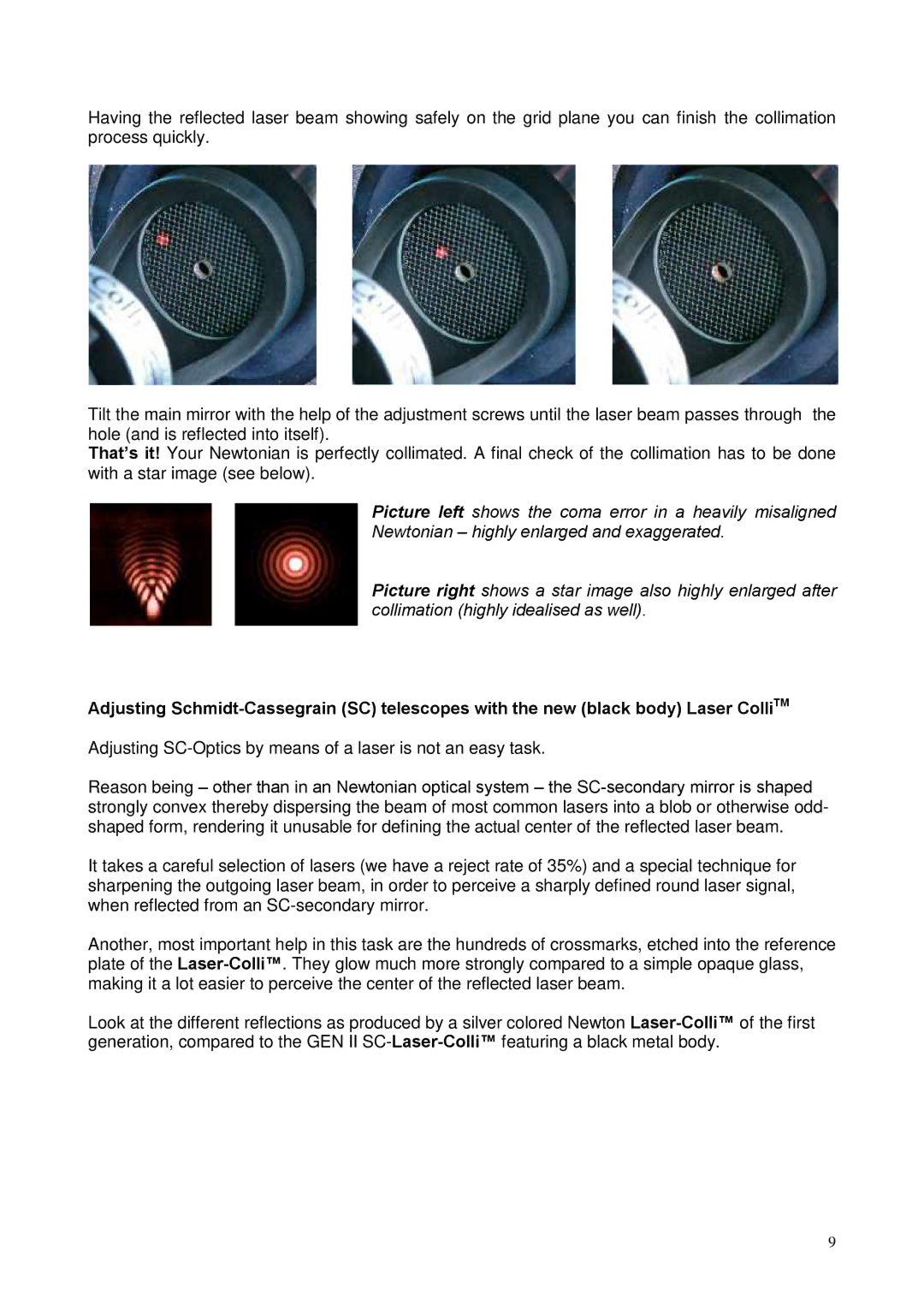
Having the reflected laser beam showing safely on the grid plane you can finish the collimation process quickly.
Tilt the main mirror with the help of the adjustment screws until the laser beam passes through the Thathole ’(ands it! is reflected into itself).
Your Newtonian is perfectly collimated. A final check of the collimation has to be done with a star image (see below).
Picture left shows the coma error in a heavily misaligned Newtonian – highly enlarged and exaggerated.
Picture right shows a star image also highly enlarged after collimation (highly idealised as well).
Adjusting
Adjusting
Reason being – other than in an Newtonian optical system – the
It takes a careful selection of lasers (we have a reject rate of 35%) and a special technique for sharpening the outgoing laser beam, in order to perceive a sharply defined round laser signal, when reflected from an
Another,
plate of the. They glow much more strongly compared to a simple opaque glass, making it a lot easier to perceive the center of the reflected laser beam.
Look at the different reflections as
generation, compared to the GEN II SC-featuring a black metal body.
9
